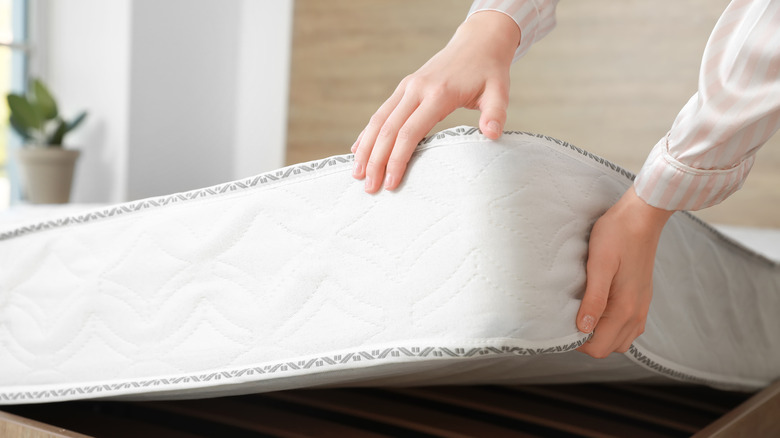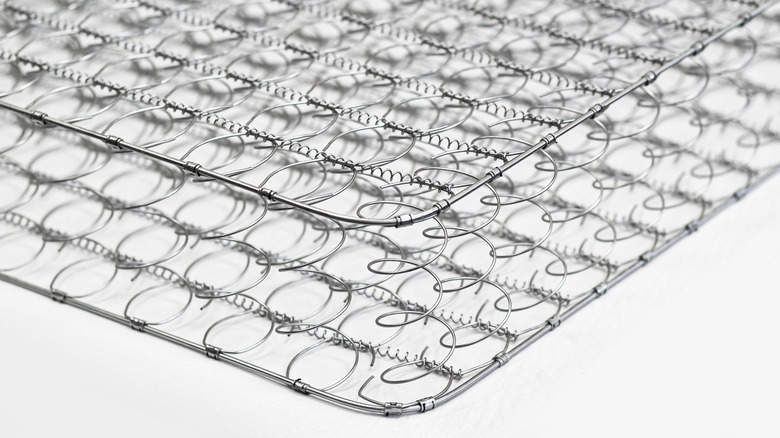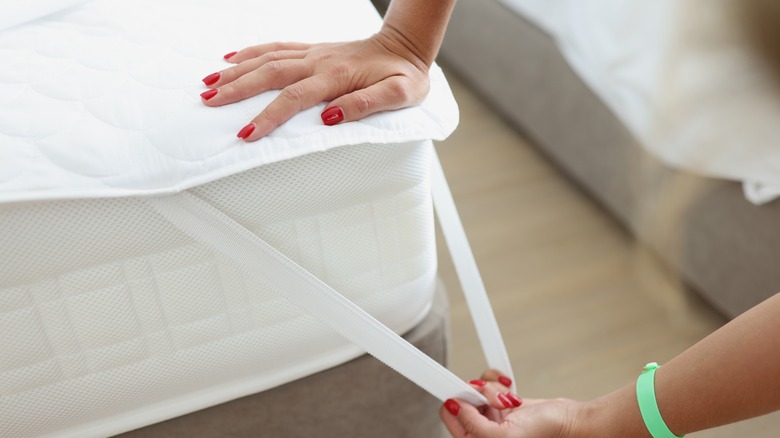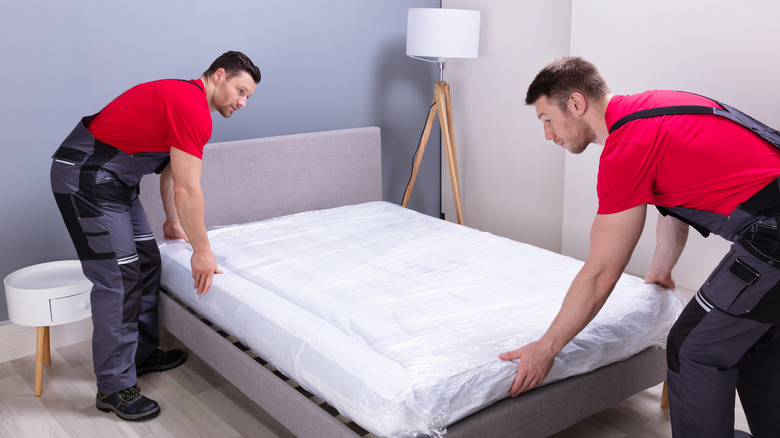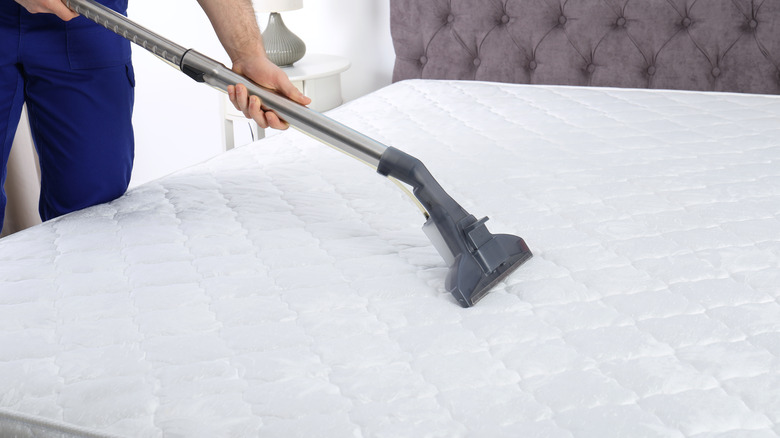5 Common Mistakes You're Making That Are Ruining Your Mattress
Once you purchase your mattress, you shouldn't need another one for seven to 10 years, says Sleep Foundation. However, if you aren't properly taking care of it, there's a good chance you'll cut its life short. Repurchasing a new mattress is not only inconvenient, but it can get pretty expensive. According to The Sleep Shop, the average price of this necessary bedroom item is $200 to $1,500, and if you're shelling out that cash every couple of years, it really starts to add up. To avoid spending unnecessary money, make sure you're taking the time to maintain it.
While you may think you're doing the right things to keep your mattress intact, there are some errors you might not even realize you're making (don't worry, it happens to the best of us). So, to keep it around for a long time, it's important you take the proper precautions. With that being said, here are five common mistakes you're making that are ruining your mattress.
1. Not supporting it
Box springs exist for a reason — to support your mattress and reduce the amount of shock it takes in, Sleep Foundation explains. Your mattress doesn't receive the proper airflow required to keep it cool without a box spring. If you do have a box spring, it's crucial you get a new one if you notice yours is acquiring some wear and tear. However, some beds don't require box springs, though every mattress needs some sort of support. For example, foundations are better suited for foam beds, whereas a platform bed is great for those who want storage drawers.
Another big issue with no support is the toll it takes on your body. If your mattress sits flat on the ground or isn't supported properly, you can have issues with your back and neck, as well as pains, says Sleep Organic. To prevent this, ensure you have a support system for your bed.
2. Keeping it unprotected
Whether or not you have a bedwetter in the household, you should still be using a mattress protector to keep it fresh and safe. A protector is typically made of polyester, cotton, organic cotton, vinyl, or polyurethane materials, which help to absorb liquid and moisture, as Mattress Advisor explains. However, by leaving your mattress unprotected, you're subjecting it to mold, which can grow if it remains in damp, moist conditions, according to BioClean. So if you start to notice a musty smell, new stains, or insects infesting your bedding items, chances are it's growing (or has already grown) mold.
Unfortunately, once your mattress is moldy, there's nothing you can do except toss it, which is why protectors are so important. When shopping, make sure you don't confuse the protector with the mattress topper: A topper makes your bed more comfortable, not liquid resistant. You can still use a mattress topper, but make sure you put the protector on first.
3. Failing to rotate it
To prevent ruining your mattress, manufacturing companies encourage rotating and flipping it. Doing so distributes the rips and tears that occur when you sleep in the same position every single night, says Sleep Foundation. Taking the same spot means you're adding a lot of pressure to that area, which causes it to sag (this is most common around the shoulders and hips). If you're unsure how often you should rotate and flip your mattress, take a peek at the owner's manual.
If you have misplaced your manual, a general rule is that memory foam and latex mattresses get rotated once or twice a year, depending on their condition. If you've recently purchased an innerspring one, you should be good at flipping it once or twice a year as well. In the event you have an older innerspring mattress, you should flip it more frequently (about three to five times a year).
4. Jumping on the bed
As fun as it is, your mother was right when she told you to stop jumping on the bed. It's not only dangerous but a quick way to ruin your mattress. Frequently jumping on the bed destroys your mattress and gives your box spring quite the beating as well, Isense explains. Consistently jumping on the bed breaks down its structure over time, causing lumps and bumps in the mattress that can prevent you from getting a good night's sleep.
Additionally, it introduces microscopic organisms, such as dust mites, into your bedroom because you (or your children) walk around all day, collecting dirt and dust on the bottom of your feet, which you then stomp on the mattress. When you jump on the bed, you're also adding extra weight to the mattress, causing it to sink. This activity can also weaken your bed and mattress' edges, meaning less surface area and a higher risk of falling off just by sitting down.
5. Skipping cleanings
One of the most common mistakes people make that ruins their mattress is not cleaning it regularly. According to Mindbodygreen, you should be cleansing it at least every six months. Why is cleaning so important? It rids your mattress of dead skin, dust, and debris it collects daily. Furthermore, cleaning your bed is actually a lot easier than you think. For quick cleaning, give it a good vacuuming with the upholstery attachment. This will eliminate all of that debris in a short amount of time.
If you have a foam mattress, you should vacuum it with a soft brush head instead since it's much more fragile than an innerspring. To give your bed a deeper cleaning, you want to use baking soda to help neutralize any odors. Depending on the size of the mattress (and the intensity of the stench), you'll want to distribute 1/2 or the entire box of baking soda onto it. You can vacuum it up after a couple of hours, or you can choose to keep it on until the next day.
